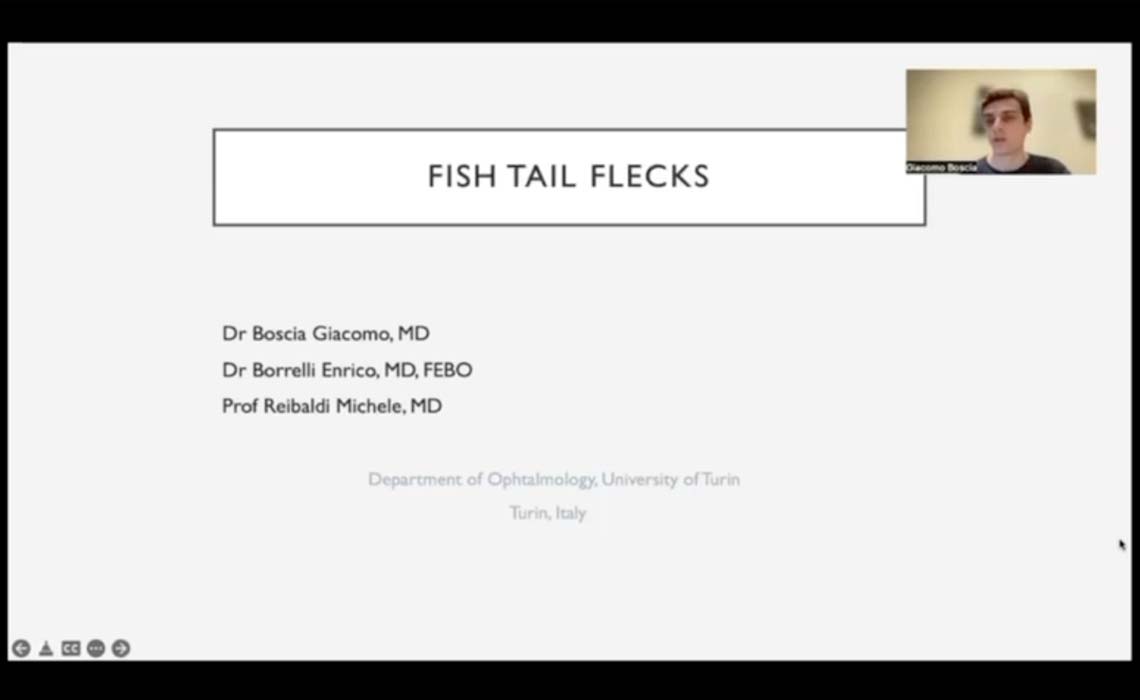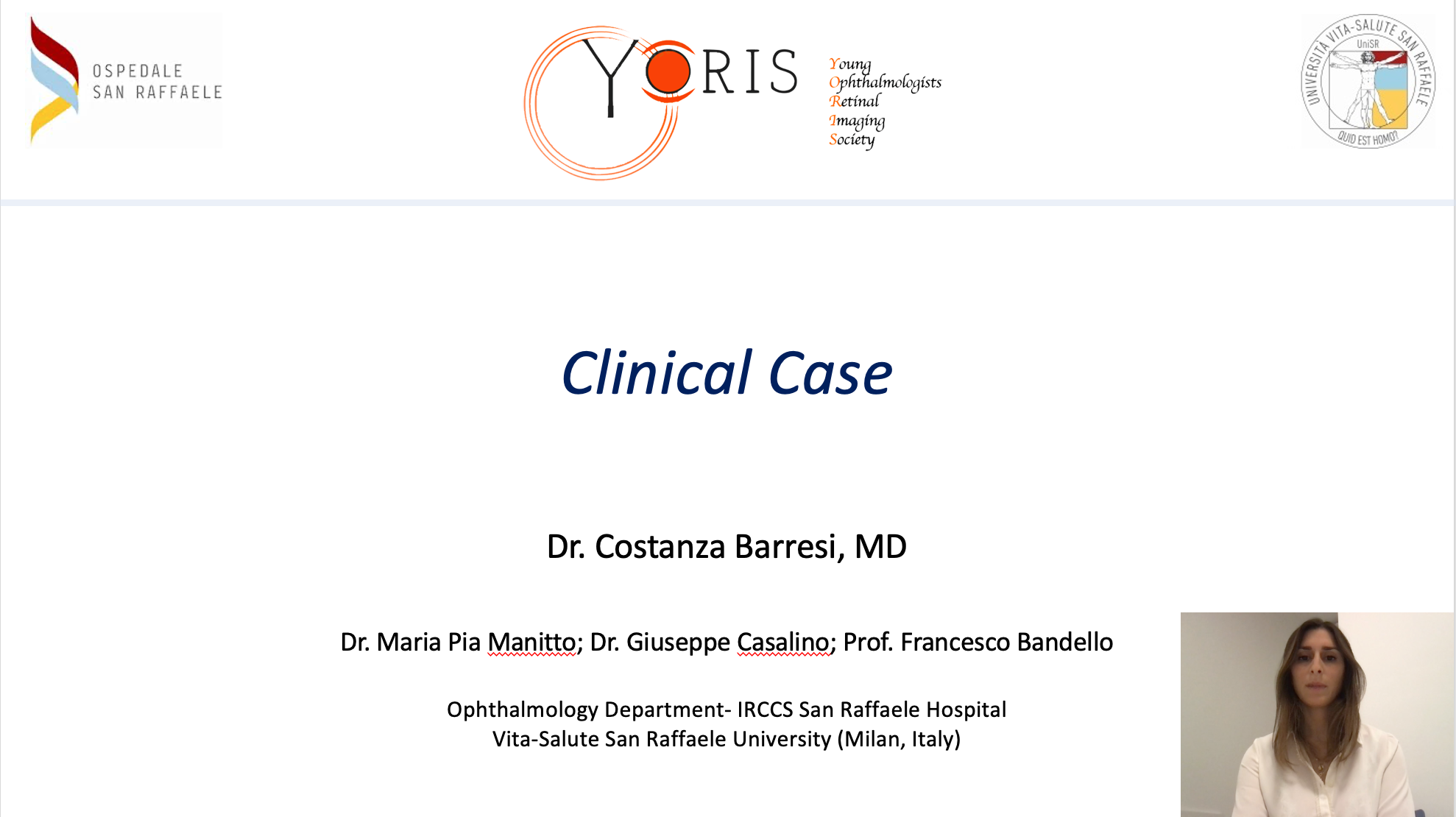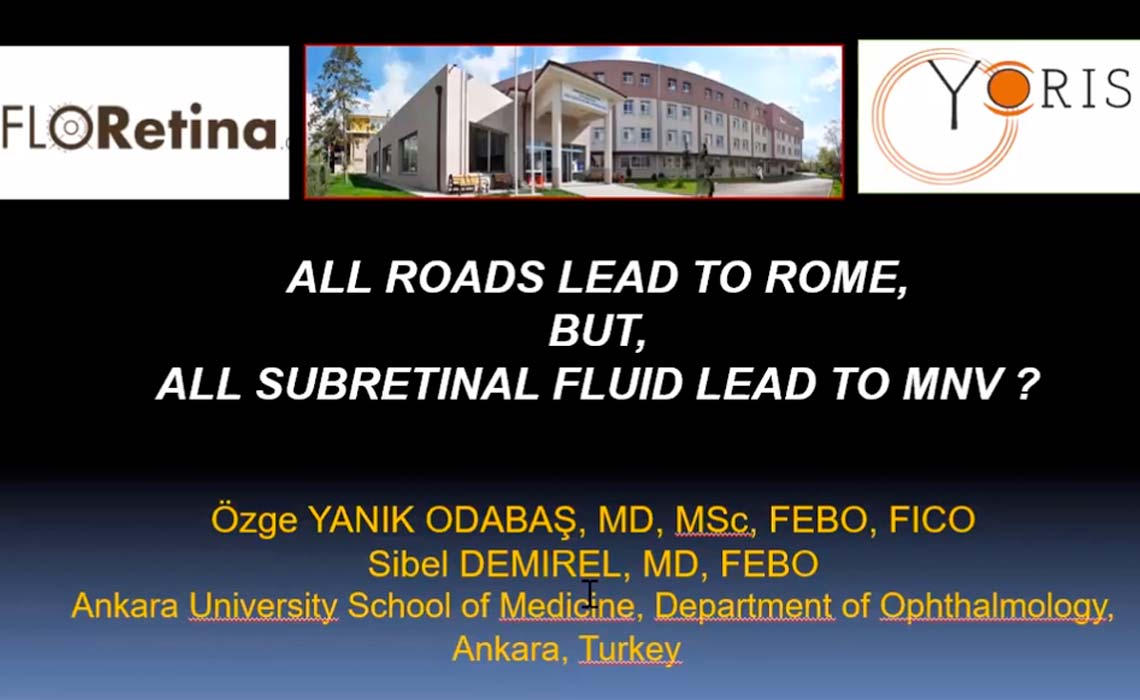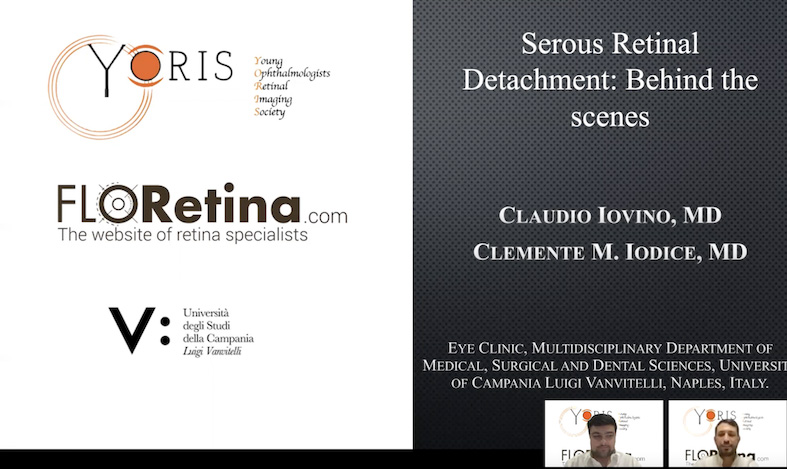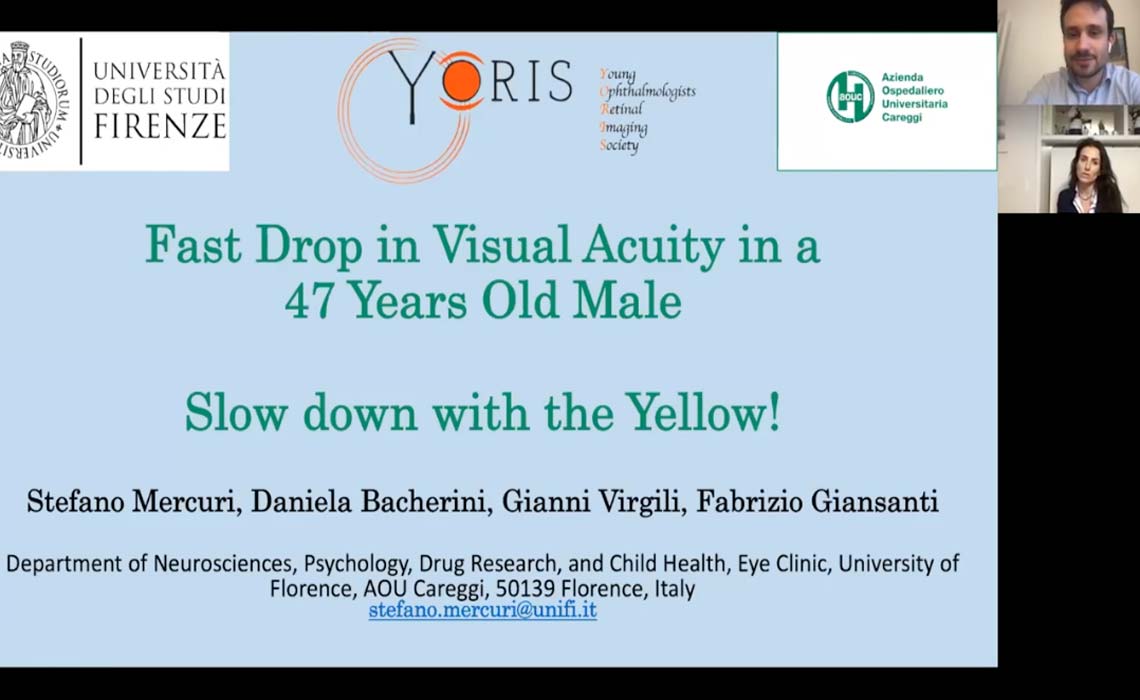YOUNG OPHTHALMOLOGISTS RETINAL IMAGING SOCIETY
Challenging clinical cases
Search in clinical cases section
Fish Tail flecks
Giacomo Boscia Enrico Borrelli Michele ReibaldiA 55-year-old male patient was referred to our medical retina unit for bilateral vision loss occurred in the last year. Fundus examination revealed bilateral macular atrophy with foveal sparing surrounded by yellowish ‘fish tail flecks’ all over the posterior pole. SD-OCT, FAF, FA and ERG were performed. Genetic evaluation confirmed diagnosis of Stargardt Disease.
Watch nowA young boy with visual loss: when diet makes the difference
Costanza Barresi Maria Pia Manitto Giuseppe Casalino Francesco BandelloWe report the outcome of 3 years of arginine-restricted diet and vitamin B6 supplementation in a boy who presented with gyrate atrophy and bilateral cystoid macular edema. The diagnosis was made on the basis of clinical findings and increased plasma ornithine levels. Molecular genetic testing revealed a disease-causing homozygous mutation in the ornithine aminotransferase (OAT) gene. After 3 months of dietary modification and pyridoxine supplementation, visual acuity improved, and optical coherence tomography showed resolution of cystoid macular edema in both eyes. This anatomical and functional improvement was maintained during 3 years of follow-up.
Watch nowAll roads lead to Rome, but, all subretinal fluid lead to MNV?
Ozge Yanik Odabas Sibel DemirelA sixty-eight-year-old female presented with minor visual disturbances in her both eyes. Structural B-scan OCT revealed drusenoid PEDs with overlying hyperreflective material in the right eye, and hyperreflective foci located in the inner retinal layers of left eye. Fundus autofluorescence showed hyperautofluorescent dots and areas in both eyes. During follow-up period, the imaging findings of the macular lesions start to resemble butterfly shaped pattern dystrophy with linear pattern characteristic, and subretinal fluid was developed. However, an MNV lesion did not exist on dye angiography. This case highlights the coexistence of non-neovascular AMD, acquired vitelliform material, and subretinal fluid with extraordinary evolution of these retinal lesions. Subretinal fluid and acquired vitelliform material may develop during the follow-up of non-neovascular AMD cases.
Watch nowSerous retinal detachment: Behind the scenes
Claudio Iovino Clemente M. IodiceA 37-year-old healthy male presented with a 5-day history of blurred vision in the right eye. Medical and ocular histories were unremarkable, and the patient was not taking any medications. On examination, visual acuity was 20/250 in the right eye and 20/20 in the left eye; anterior segment examination was within normal limits in both eyes. Based on multimodal imaging evaluation a diagnosis of Atypical Bullous Acute form of CSC was made. In four weeks the massive subretinal fluid completely reabsorbed without any medication.
Watch nowFAST DROP IN VISUAL ACUITY IN A 47 YEARS OLD MALE: SLOW DOWN WITH THE YELLOW!
Stefano Mercuri Daniela Bacherini Gianni Virgili Fabrizio Giansanti Acute syphilitic posterior placoid chorioretinitis (ASPPC) is a rare disease which may resemble many other retinal diseases.Multimodal imaging is important for diseases characterization, and new techniques may aid us in the understanding of their etiopathogenesis.
Accurate patient’s medical patient history is fundamental to spot the correct diagnosis as soon as possible with the purpose to avoid ocular complications and complications linked to syphilis progression.
All that glitters is not gold
The case of a 29 female patient complaining bilteral progressive vision loss. No medical hystory. Thanks to multimodal imaging, it was possible to identify the diagnosis of Bietti Crystalline Distrophy, which is an autosomal recessive disease, due to the mutation in the CYP4V2 gene.
Watch now
